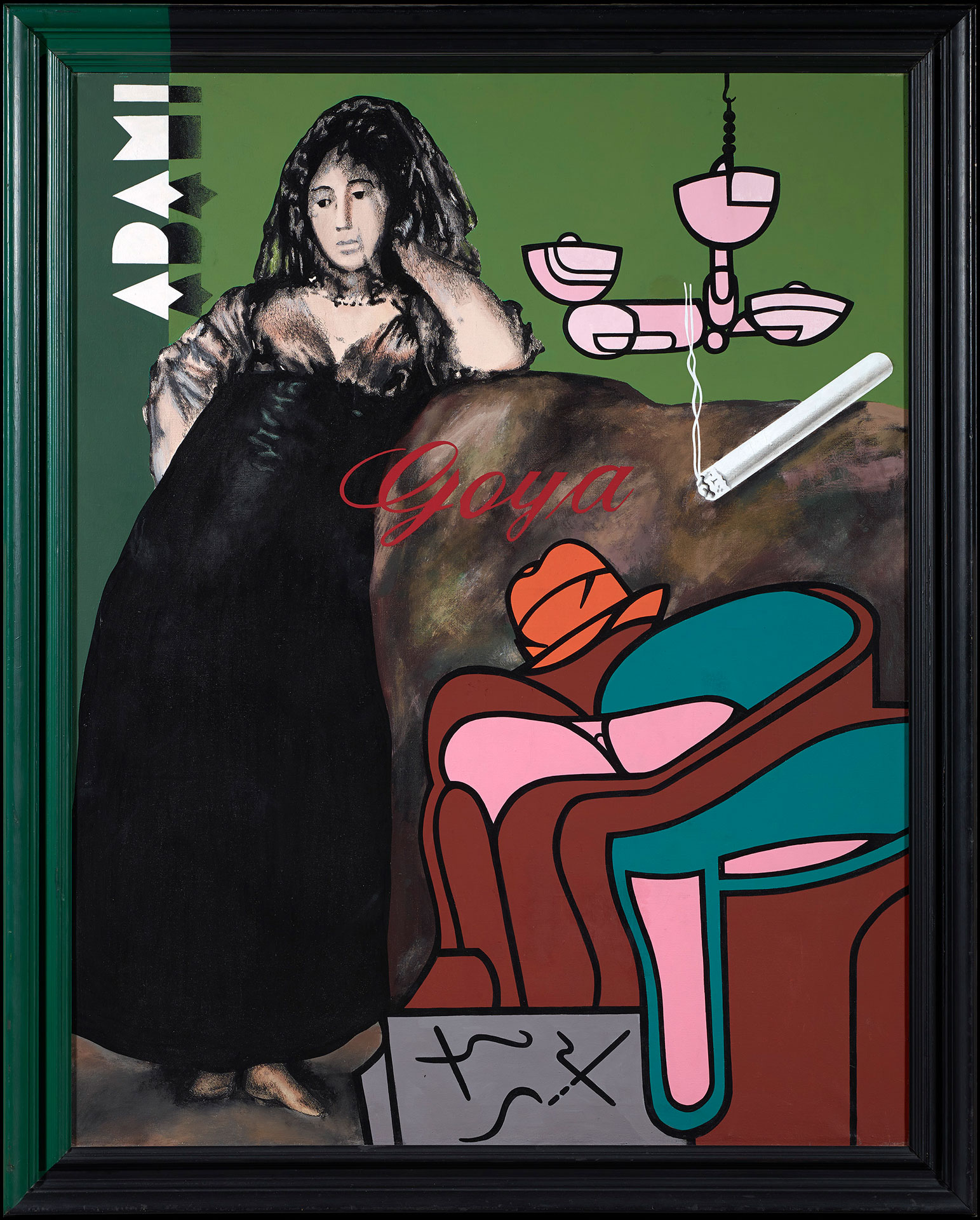
Equipo Crónica (Valencia, 1964-1981)
Adami and Goya in the Living Room
1974
WORK INFORMATION
Acrylic on canvas, 146 x 114 cm
In Valencia, three painters got together in 1964–1965 and formed a group they decided to call Equipo Crónica: Manolo Valdés (Valencia, 1942), Rafael Solbes (Valencia, 1940–1981) and Joan-Antoni Toledo (Valencia, 1940–1995). Although Toledo dropped out the following year, Valdés and Solbes continued to work together until the latter's death in 1981. They stopped signing their paintings individually and worked together on the same canvases.
In contrast to the pictorial style of European Art Informel and American Abstract Expressionism and the geometric abstractions, Equipo Crónica's painting adopted a realist, detached language by using media such as silkscreen, spot ink and the constant appropriation of motifs from the political world and art history. Their realist inclination, a product of the group members' past association with the Valencian collective Estampa Popular, differed noticeably from the more traditional facet of contemporary realism. Avoiding the subjectivity of the spontaneous pictorial gesture, they combined different styles, figures and elements borrowed from Baroque and contemporary painting with apparent objectivity. Each painting represented an opportunity to confront fragments of diverse pictorial styles with graphics or snippets of everyday life and the mass media. The members of Equipo Crónica were well-acquainted with Pop Art and had several things in common with that movement, but their style was closer to the critical, acidic figuration of the French artists Aillaud and Recalcati and fellow Spaniard Arroyo than to American Pop. In 1966 Solbes and Valdés began to introduce "quotations" of paintings by Velázquez, Ribera, El Greco and Goya, inserting them in a very different context where they acquired new meanings and posed new questions. The series they produced testifies to their wanderings back and forth through the history and practice of painting and the conflictive world on which they turned a critical eye.
Adami y Goya en el salón [Adami and Goya in the Living Room] features Goya's Leocadia—one of the protagonists of his Black Paintings—with her striking dark tones and famous absent-minded gaze, juxtaposed with the colourful, black-outlined forms of Valerio Adami. The names appear in large letters: Goya's is carefully written in red cursive, and Adami's uses the trademark font of Ideales cigarettes.
The other work in the collection, Menina, is one of several sculptural variations on Menina IV, created in the final year of Equipo Crónica's existence. The way the hands are arranged on the skirt and the half-moon profile of the head imitate the silhouette of Infanta Margarita of Austria and Queen Mariana. However, the details of the woman are borrowed from one of the city ladies portrayed by German Expressionist Ernst Ludwig Kirchner. The menina surrenders her body to a kind of "takeover" by the avant-garde. There is another telling detail: the figure's left hand holds a large open fan, a recurring element in many works from the early 1980s. The theme depicted on the fan is the Spanish bullfight, inspired by Picasso and featured in several of Equipo Crónica's paintings. [Carmen Bernárdez]

